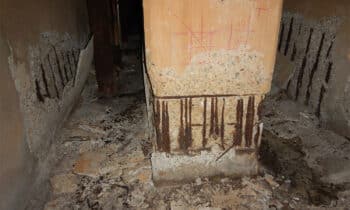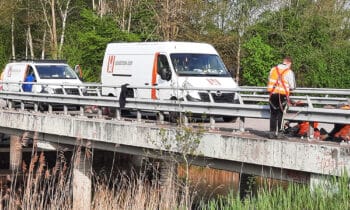
Conservation inspections on 6,400 structures
Like cars, Rijkswaterstaat's 6,400 engineering structures in our country are periodically inspected. In the first place to guarantee safety but also to make a realistic estimate of future maintenance. Rijkswaterstaat is not alone in this; all managers of engineering structures do this to a greater or lesser extent. But the area of the country's largest road authority does have a number of peculiarities.
We have been inspecting roads and structures periodically since time immemorial, begins Mark Zwaan, program manager at Rijkswaterstaat.
"For a number of years now, we have distinguished between three forms in the case of civil engineering works: the scouring, a condition inspection and a maintenance inspection. Inspection is done almost daily by contractors and inspectors present in the area. A condition inspection is a technical inspection that is repeated annually, similar to a periodic inspection. Finally, the preservation inspection is the most thorough inspection and is done once every six years. The condition of the structure is examined from head to toe. This includes an estimate of what risks (read: maintenance) we can expect over the next ten years to maintain the object and its function in the long term."

Genoa
The national infrastructure is crucial to our economy. "When maintaining large locks, bridges and tunnels, you immediately talk about very large costs. You have to manage that. Money has to be set aside for it," explains Zwaan. "Moreover, if maintenance is going to be carried out, it not infrequently causes considerable inconvenience. That's another reason why good planning and foresight are essential to minimize disruption. All inspections are risk-based. If we see the risk increasing, the depth of the inspection also increases or an extra inspection will take place or a periodic inspection will be brought forward. We want to prevent a situation like the one that occurred in Genoa. Safety has top priority."
This was once again evident during the acute closure of the Merwede Bridge in 2016. "There was a rather unknown damage pattern with which we had little or no experience. There was a suspicion of hairline cracks in the joints, but this could not be observed with the naked eye. We immediately assumed the 'worst case' scenario so as not to take any risks regarding the structural safety of the bridge."

Build in learning curve
No structure under the management of Rijkswaterstaat escapes the dance with regard to the six-yearly Conservation Inspection. "All 6,400 structures in our acreage are inspected," says Zwaan. "It ranges from overpasses, large culverts under roads, tunnels, bridges, locks, pumping stations, aqueducts, etc. Only the small culverts and storm surge barriers do not fall under our scope. The latter group has a separate status and is managed separately. For the 6,400 structures, we enter into inspection contracts with inspection agencies and engineering firms. These are three-year contracts in order to achieve some efficiency and also to build in a learning curve. Asset management is constantly evolving within the infrastructure sector, including us. Over time, new insights arise that we can better anticipate with new contracts. The contracts cover the entire area. Based on master planning and risk management, we look at which objects are due and assume an average number of inspections of a thousand engineering structures per year."

From the maintenance inspections rolls a complete report with identified defects, risks, control measures and costs. "Based on these reports, maintenance is prioritized and clustered at the area level to achieve optimizations in execution as well. Depending on the urgency, we try to plan maintenance cost-effectively and with minimal disruption. A process has also been set up so that when things get exciting, we can act immediately. Because again: safety is leading."




